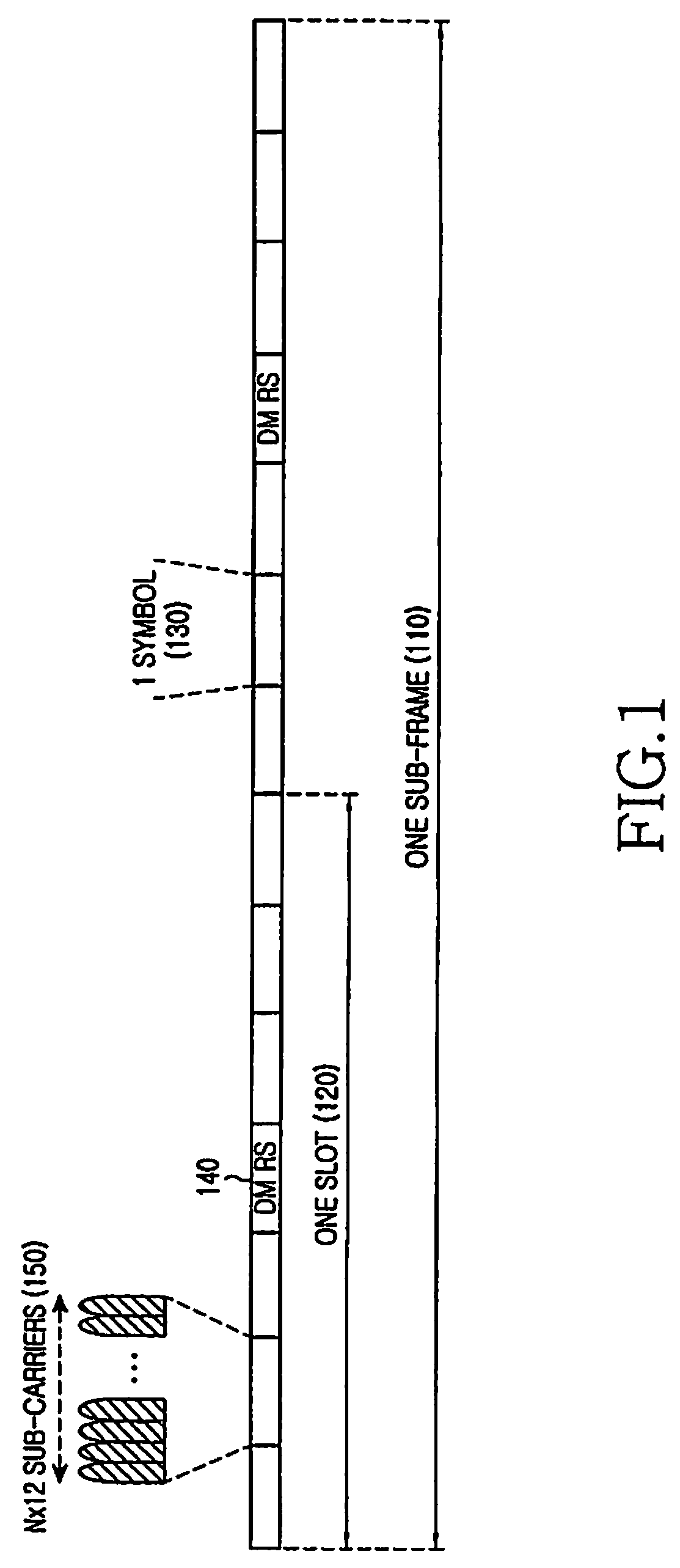Method and apparatus for transmitting and receiving different signal types in communication systems
a communication system and signal type technology, applied in the field of wireless communication systems, can solve the problems of increasing the complexity of the node b receiver, compromising the accuracy of the cqi reception and the rr or sr reception, and the overhead of the system, so as to achieve the effect of consuming additional bandwidth resources
- Summary
- Abstract
- Description
- Claims
- Application Information
AI Technical Summary
Benefits of technology
Problems solved by technology
Method used
Image
Examples
first embodiment
[0078]In a first embodiment, the present invention assumes that a UE is assigned at least two cyclic shift values. The first cyclic shift value can be used either for DM RS transmission in the PUSCH as illustrated in FIG. 1, or for PUCCH transmission as illustrated in FIG. 9 or FIG. 10. The second cyclic shift value is used for RS transmission without any other (non-RS) signal transmission in the respective TTI either during the DM RS symbols in the PUSCH or throughout the PUCCH. This RS serves either as an RR or as an SR and is multiplexed with the DM RS or the PUCCH transmission from another UE, which uses a third cyclic shift value which may be the same as the first cyclic shift value.
[0079]A fourth cyclic shift value may be reserved to never be used, either for the DM RS in the PUSCH or for the PUCCH, so that the serving Node B can determine whether either a RR or a SR was transmitted. This can be achieved by comparing the output energy between the demodulation results using the...
second embodiment
[0080]In a second embodiment, the present invention assumes that a UE is assigned at least three cyclic shift values. The first cyclic shift value is used for the transmission of a DM RS in the PUSCH as illustrated in FIG. 1 or for PUCCH transmission as illustrated in FIG. 9 or FIG. 10. The second and third cyclic shift values are used for transmission of a RS without any other (non-RS) signal transmission in the corresponding TTI to indicate, respectively, an RR and the opposite of an RR (that is, that the UE still has data to transmit). The RS using the second or third cyclic shift value can be multiplexed with the DM RS of another UE having PUSCH transmission and using a fourth cyclic shift value, which may be the same as the first cyclic shift value, or with the PUCCH transmission of another UE using a fourth cyclic shift value. The Node B determines whether an RR or its opposite was sent by correlating the received signal during the RS symbols in the PUSCH or during the entire ...
PUM
 Login to View More
Login to View More Abstract
Description
Claims
Application Information
 Login to View More
Login to View More - R&D
- Intellectual Property
- Life Sciences
- Materials
- Tech Scout
- Unparalleled Data Quality
- Higher Quality Content
- 60% Fewer Hallucinations
Browse by: Latest US Patents, China's latest patents, Technical Efficacy Thesaurus, Application Domain, Technology Topic, Popular Technical Reports.
© 2025 PatSnap. All rights reserved.Legal|Privacy policy|Modern Slavery Act Transparency Statement|Sitemap|About US| Contact US: help@patsnap.com



